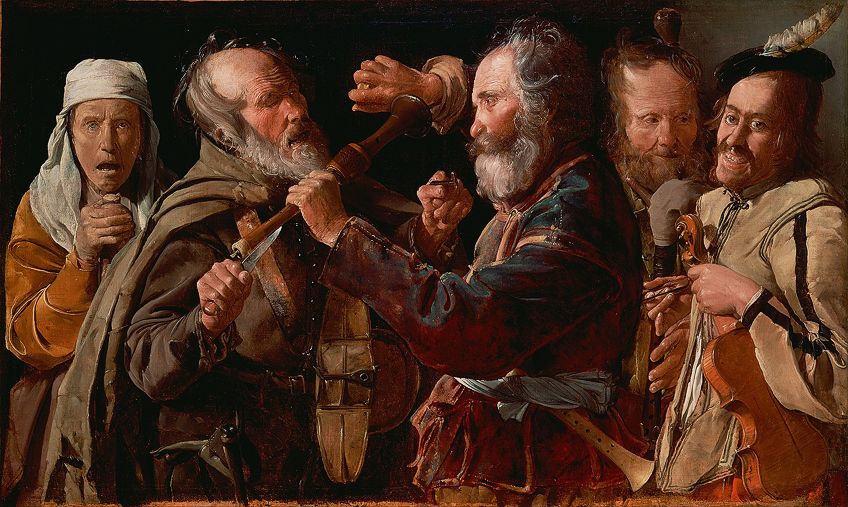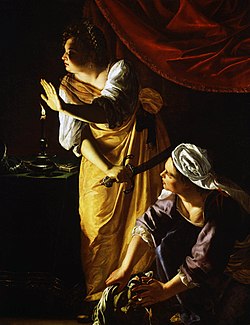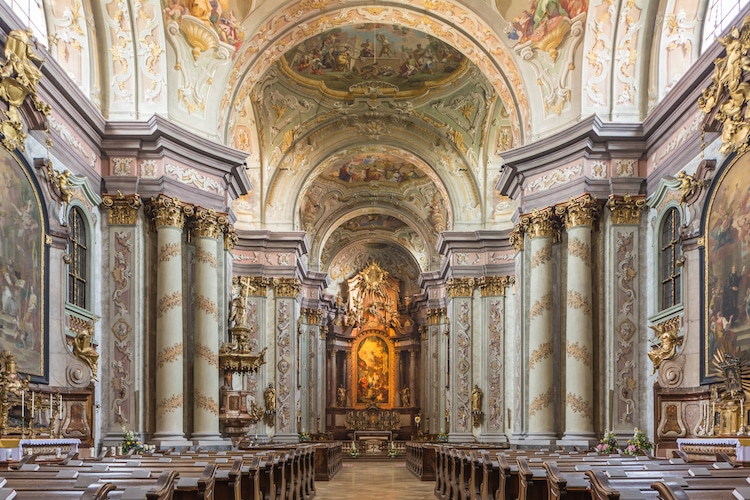The Baroque Era: A Dramatic Flourish in Art, Architecture, and Culture

Approximately from the early 17th century until the middle of the 18th century, the Baroque period was characterized by a great deal of emotion, grandeur, and elaborate detail. In addition to painting and sculpture, the Baroque style, which originated in Rome, Italy, and extended throughout Europe and beyond, had an impact on architecture, music, literature, and even politics. The Baroque period, which was characterized by religious conflict, growing absolutism, scientific advancements, and cultural change, was more than just an artistic movement; it represented the complexity of the time.
Historical Context
A period of profound social and political transformation coincided with the emergence of the Baroque style. Europe was struggling with the Protestant Reformation's aftermath and the Counter-Reformation, which was the Catholic Church's answer. With the goal of reinforcing its spiritual power, the Catholic Church used the arts as a medium for communication, hoping to amaze and uplift the faithful through dramatic and moving images. In order to establish their authority and link art and politics, monarchies frequently employed Baroque grandeur.
important historical touchpoints:
The Counter-Reformation promoted religious art that was both accessible and emotionally charged.
Realistic thinking and the study of light were impacted by the Scientific Revolution (Galileo, Kepler, and Newton).
Baroque was adopted by absolute rulers, particularly Louis XIV's France, as a representation of divine authority and right.
Baroque Art: Emotion, Movement, and Drama
Important features include the dramatic use of light and shadow (tenebrism and chiaroscuro).
An accurate representation of the human body
Strongly emotional information
Dynamic movements and intricate compositions
Detailed ornamentation and vibrant color schemes
Notable Artists
1. 1571-1610 Caravaggio
A pioneer of Tenebrism, Caravaggio used gritty realism and unfiltered human emotion to bring biblical themes to life. Astonished and enthralled audiences were his masterpieces, such as Judith Beheading Holofernes and The Calling of Saint Matthew.

The Cheaters, around 1595, Art Kimbell’s museum, Fort Worth
2. Rubens (1577-1640) Peter Paul
Rubens, a Flemish master of movement and sensuality, created paintings that are bursting with vitality, dynamic forms, and striking contrasts, like The Elevation of the Cross.

Property from a Private Collection, New York
SIR PETER PAUL RUBENS
3. The 1606-1669 Rembrandt van Rijn
Rembrandt was a Dutch artist who employed light to explore human psychology. His self-portraits and The Night Watch are prime examples of his technical proficiency and capacity for introspection.

Painted in 1642, Rembrandt's The Night Watch is a commissioned group portrait of a militia company.
4. The artist Artemisia Gentileschi (1593–c.1656)
Artemisia, one of the only well-known female painters of the era, combined Baroque fury with personal narrative to tell religious tales through a feminist prism, particularly in pieces like Judith Slaying Holofernes.

Judith and Her Maidservant, 1625, Detroit Institute of Arts
Baroque Architecture: Theatrical Grandeur
Exquisite decoration, curving shapes, dramatic constructions, and a smooth blending of sculpture, painting, and building are characteristics of baroque architecture.
Characteristics: Symmetry and enormous size
spectacular use of light, frequently through enormous windows and domes
Exquisite exteriors and interiors
The use of expensive materials and gold

Ornate golden interior of St. Peter’s Basilica, Vatican City
Prominent Illustrations:
The famous St. Peter's Basilica in Rome is one example. An essential component of Baroque grandeur, this was redesigned by architects such as Michelangelo and Bernini.
Louis XIV commissioned the French Palace of Versailles, which is a prime example of political power manifested in architecture and art.
Baroque Music: Expressive and Ornamental
Borromini's design for the Church of San Carlo alle Quattro Fontane in Rome is a testament to his inventiveness in geometry and spatial intricacy.
The elaborate and passionate nature of the visual arts was reflected in baroque music. It was a time of concertos, opera, and the development of tonality as a key organizational principle.

Features: Basso continuo is used contrast-focused approach (dynamics, texture)
Vibrant detail and ornamentation
The suite and fugue are examples of structured forms.
Chief composers include Johann Sebastian Bach, a master of liturgical music and fugue whose colossal compositions include Mass in B Minor and the Brandenburg Concertos.
George Frideric Handel is renowned for his operas like Giulio Cesare and his sweeping oratorios like Messiah.
Antonio Vivaldi: The Four Seasons was written by this composer, who extended the concerto form's potential.
Baroque and Religion
Baroque expressiveness was deeply rooted in religion. The Catholic Church sought to convey religious narratives with emotional immediacy through the use of art as a persuasive tool. Churches evolved into immersive spaces where spiritual drama was produced by the combination of architecture, sculpture, painting, and music.

Judith and Holofernes, 1598-1599, National Gallery of Ancient Art, Rome
Legacy of the Baroque
The Baroque era's influence endures despite its ultimate transition to the lighter and more whimsical Rococo style and then to Neoclassicism.
Baroque's Persistent Influence: Its capacity to awe and motivate has led to its continued employment in royal and religious contexts.
significant impact on theater and film, particularly on dramatic lighting and visual narrative
Continuous appreciation of music: Western classical tradition is based on baroque compositions.
Contemporary architectural and artistic reinterpretations

Conclusions
A powerful aesthetic was created during the Baroque period by fusing politics, religion, and art in a dramatic, expressive, and immersive cultural movement. The Baroque era reminds us that art can be a powerful instrument and a profound representation of the human condition, whether it is found in the evocative Bach compositions, the dramatic canvases of Caravaggio, or the opulent halls of Versailles.
Join our classes to enhance & improve your memory skills and let your child unlock the power to retain information from every moment of his/her life!
